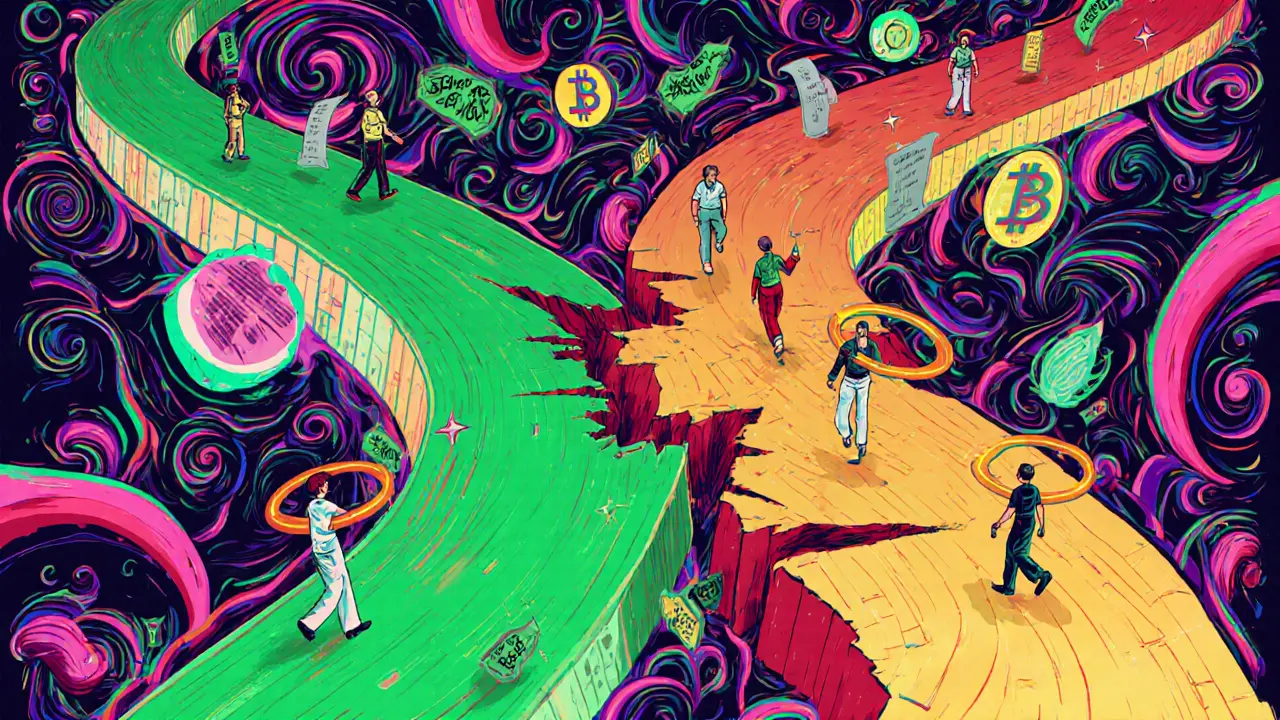Blockchain Fork: What It Is, Why It Matters, and What You Need to Know
When a blockchain fork, a split in a blockchain network that creates two versions of the ledger. Also known as chain split, it happens when developers or users can’t agree on the rules—and the network divides to follow different paths. This isn’t just a technical glitch. It’s a power struggle made visible in code. Every time a blockchain forks, it tests how decentralized, resilient, and community-driven the network really is.
A hard fork, a permanent split that requires all nodes to upgrade to the new version means old nodes can’t talk to new ones anymore. Bitcoin Cash was born this way in 2017, when a group wanted bigger blocks to handle more transactions. If you held Bitcoin at the time, you got Bitcoin Cash for free—but only if you controlled your own keys. A soft fork, a backward-compatible upgrade where old nodes still recognize new blocks is quieter. It doesn’t split the chain, but it changes how transactions are validated. SegWit on Bitcoin was a soft fork—it didn’t create a new currency, but it made transactions cheaper and faster.
Not all forks are equal. Some, like Ethereum’s move to proof-of-stake, were planned upgrades with broad support. Others, like the endless parade of meme coin forks, are just copy-paste jobs with no real purpose. The ones that stick? They solve real problems: scaling, fees, governance, or censorship resistance. The ones that fade? They’re abandoned after a few weeks, leaving wallets empty and communities broken.
What does this mean for you? If you hold crypto, you’re already affected by forks—even if you didn’t notice. A fork can mean free tokens, lost funds, or a sudden drop in value. Wallets that don’t support the new chain might lock your coins. Exchanges might not credit you. And if you’re using a custodial service, you have zero control over whether you get the forked asset or not.
Behind every fork is a story—of ideology, money, or ego. Some forks aim to improve the system. Others are just attempts to cash in on a name. That’s why you need to know the difference between a real upgrade and a scam. Look at the team. Check the code. See if people are still building. A fork that doesn’t bring new features, better security, or clearer rules? It’s just noise.
In this collection, you’ll find real-world examples of forks gone right and wrong. You’ll see how regulatory actions, like MiCA in the EU or OFAC sanctions, influence how forks are treated. You’ll learn why some tokens—like ELCASH or VATAN—died after a fork, while others became major players. And you’ll get the tools to spot a fake fork before you lose your money.
What Happens During a Blockchain Fork: Soft, Hard, and How Communities Split
A blockchain fork splits the network into two versions when protocol rules change. Hard forks create new coins; soft forks upgrade without splitting. Success depends on community consensus, not just code.
